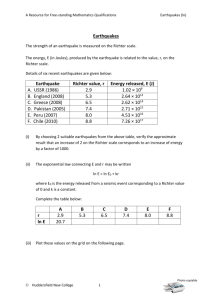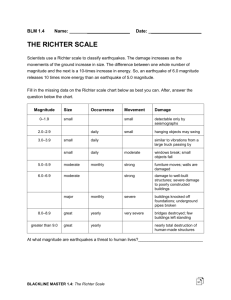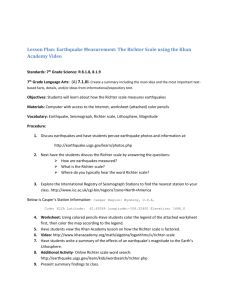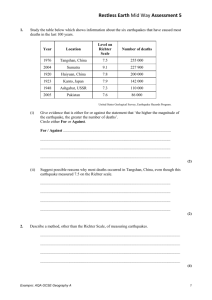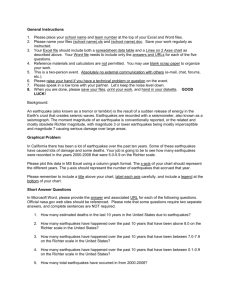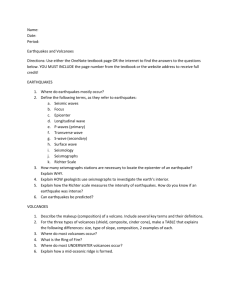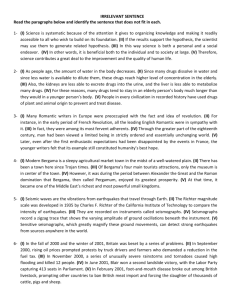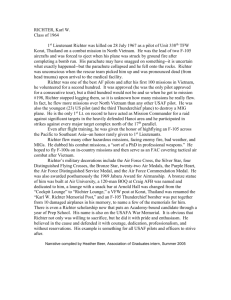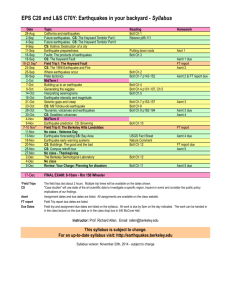STAT 515 -- Chapter 4: Discrete Random Variables
advertisement
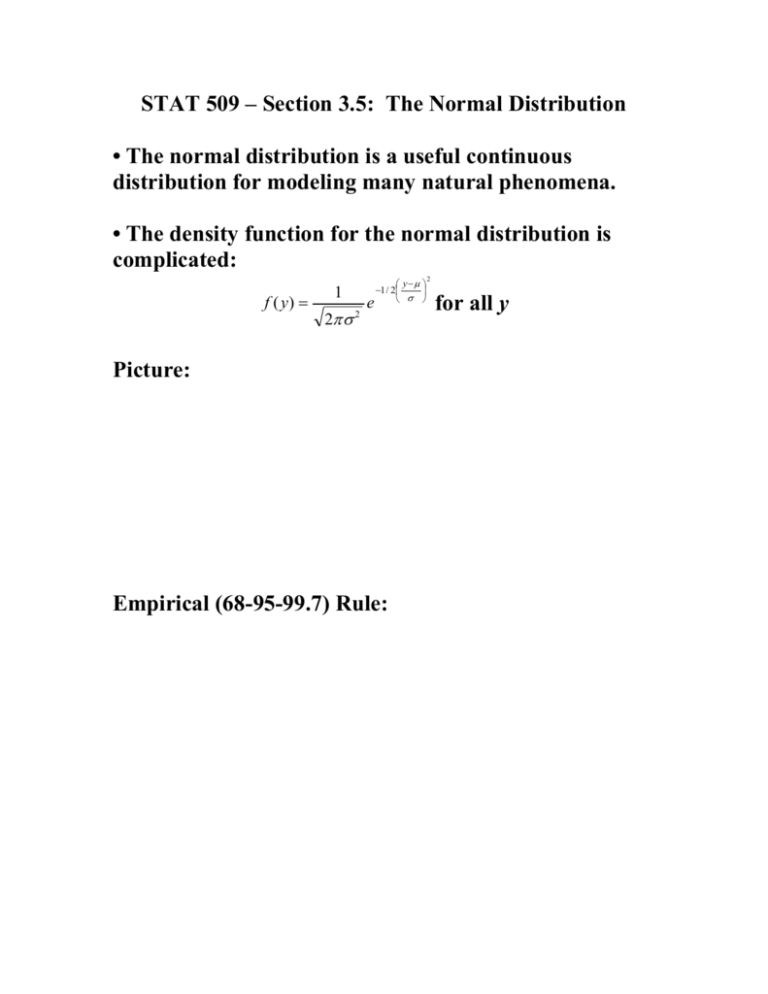
STAT 509 – Section 3.5: The Normal Distribution • The normal distribution is a useful continuous distribution for modeling many natural phenomena. • The density function for the normal distribution is complicated: f ( y) 1 2 2 e y 1 / 2 Picture: Empirical (68-95-99.7) Rule: 2 for all y Example: Since 1900, the magnitude of earthquakes that measure 0.1 or higher on the Richter Scale in a certain location in California is distributed approximately normally, with μ = 6.2 and σ = 0.5, according to data obtained from the United States Geological Survey. Picture: What percentage of such earthquakes are above 5.7 on the Richter Scale? What percentage of such earthquakes are between 5.2 and 7.2 on the Richter Scale? What percentage of such earthquakes are between 5.7 and 7.7 on the Richter Scale? What percentage of such earthquakes are between 6.7 and 7.7 on the Richter Scale? Note that the density changes depending on the values of the mean and the variance , so there are many different normal distributions (change and/or , get a different distribution). • Changing shifts the distribution to the left or right. • Increasing makes the normal distribution wider. • Decreasing makes the normal distribution narrower. Standard Normal Distribution [Notation: N(0, 1)]: The normal distribution with mean = 0 and standard deviation = 1 (hence variance = 1 also). Picture: Note: N(0, 1) distribution sometimes called the “z-distribution” and standard normal values are denoted by z. Table 1 in back of book gives area to the left of certain listed values of z. Example: Area under N(0, 1) density to left of 1.24: Table IV: Go to row labeled 1.2, column labeled .04: Correct area = What does this area mean? • If Z is a r.v. with a standard normal distribution, then P(Z < 1.24) = [Note: Same as P(Z ≤ 1.24).] • We expect that 89.25% of the values of data having a standard normal distribution will be less than 1.24 Other Probabilities: P(Z > 1.24) = P(0 < Z < 1.24) = Other examples: P(-0.54 ≤ Z < 0) = P(-1.75 < Z < -0.79) = P(-0.79 < Z < 1.16) = Finding standard normal probabilities in R: > pnorm(1.24) [1] 0.8925123 Finding Probabilities for any Normal r.v. Standardizing: If a r.v. Y has a normal distribution with mean and standard deviation , then the standardized variable Z=Y– has a standard normal distribution. So: We can convert any normal r.v. to a standard normal and then use Table 1 to find probabilities! Example: The thickness of a certain steel bolt that continuously feeds a manufacturing process is normally distributed with a mean of 10.0 mm and standard deviation of 0.3 mm. Manufacturing becomes concerned about the process if the bolts are thicker than 10.5 mm or thinner than 9.5 mm. If the process is following the assumed distribution, what is the probability that a randomly selected bolt is either thicker than 10.5 mm or thinner than 9.5 mm? What is the probability that a randomly selected bolt is thicker than 10.8 mm? We can also find the particular value of a normal r.v. that corresponds to a given proportion. Example: Assuming the process is going correctly, approximately 1% of the bolts produced will have thicknesses less than ______. We need to “unstandardize” to get back to the Y value (bolt thickness). General Rule: To unstandardize a z-value, use: Y = Z + More Normal Probabilities Example: Recall the earthquake magnitudes were distributed approximately normally, with μ = 6.2 and σ = 0.5. • What proportion of earthquakes are greater than 7? • What is the probability that a randomly selected earthquake is between 5.0 and 6.0 on the scale? • The middle 75% of earthquake measurements are between what two values on the Richter scale? • The normal model is not appropriate for every data set. • It tends to give a decent approximation to the behavior of many variables observed in nature. • Why? Many natural phenomena are in fact the sum total of lots of different factors that act independently to produce the final value. • We will see that the normal distribution can be theoretically justified as a model for the sum of many independent quantities.
